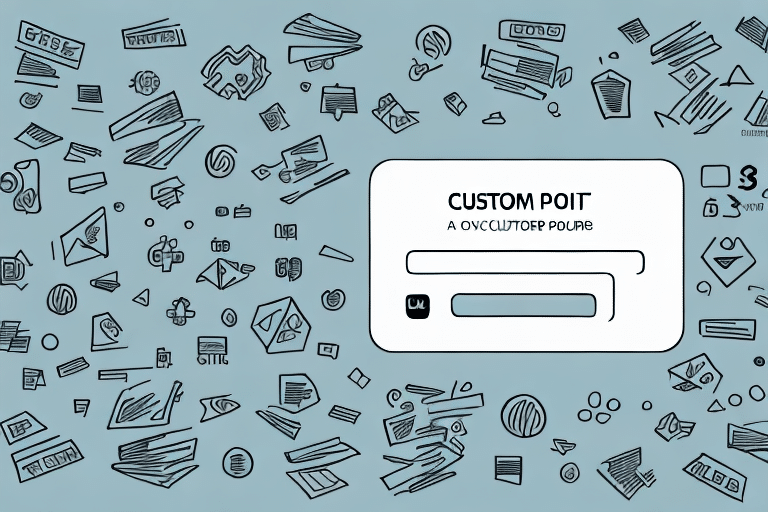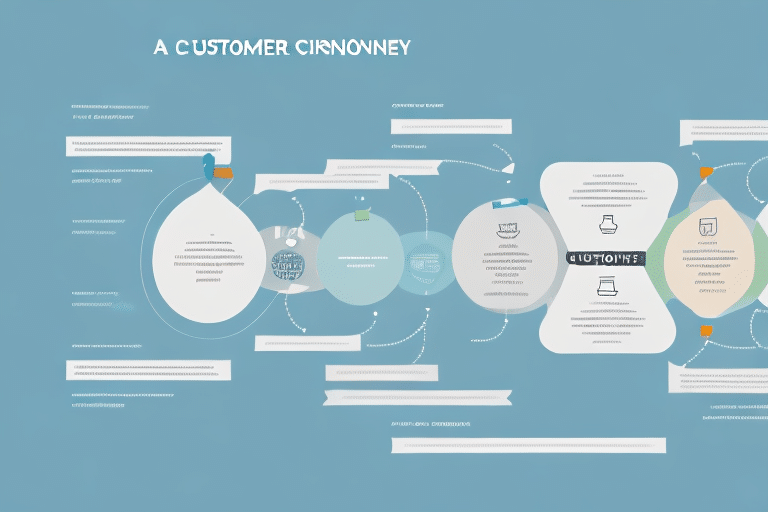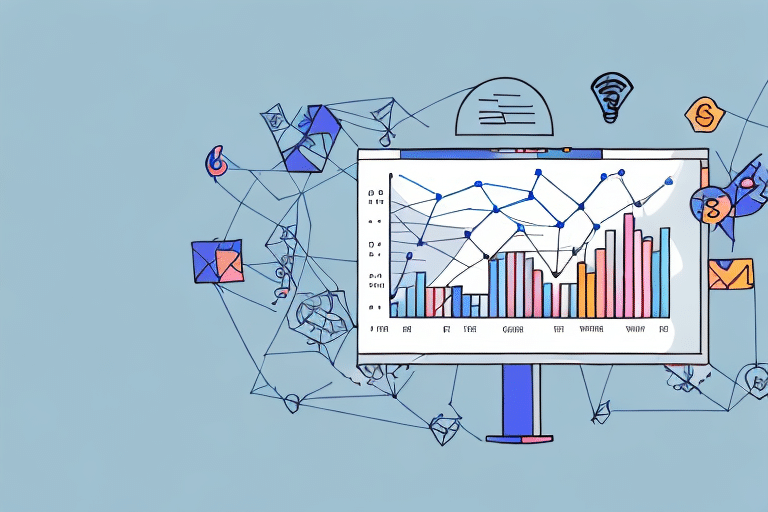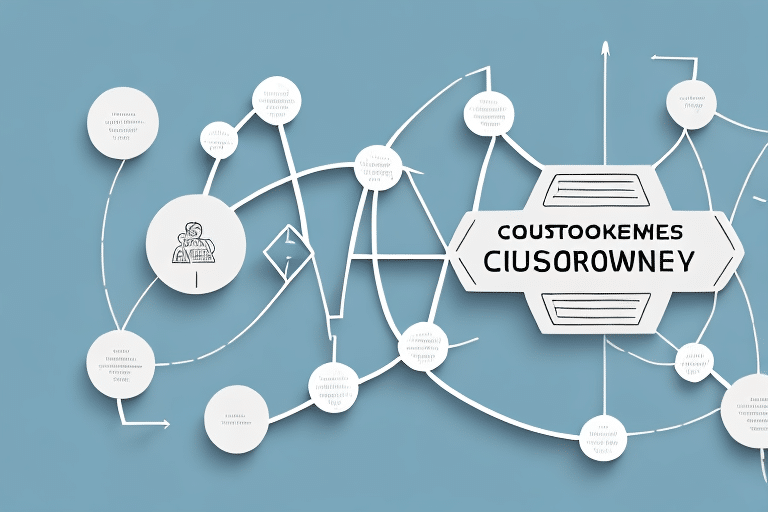5 Strategies to Improve Your Customer Retention
In today's highly competitive business landscape, customer retention is more important than ever. It's not enough to simply win new customers – you need to keep your existing customers coming back for more. In this article, we'll explore five strategies you can use to improve your customer retention and build a loyal customer base that will support your business for years to come.
Why Customer Retention is Important for Your Business
Before we dive into the strategies themselves, let's take a moment to discuss why customer retention is so critical for your business. There are several reasons why it's worth investing time and effort into keeping your existing customers happy:
- Cost-Effectiveness: It's much more cost-effective to retain a customer than to acquire a new one. Studies have shown that acquiring a new customer can cost up to five times more than retaining an existing one (Harvard Business Review), making it financially sensible to focus on your current customer base.
- Increased Revenue: Loyal customers are more likely to make repeat purchases, which means more revenue for your business over time. They're also more likely to recommend your business to others, leading to new customers through word-of-mouth.
- Strong Brand Reputation: Building a loyal customer base helps create a strong brand reputation and differentiates your business from competitors. When customers feel valued and appreciated, they're more likely to stick with your business long-term.
- Valuable Feedback: Maintaining relationships with existing customers allows you to gather valuable feedback. This feedback can help you make informed decisions and improve your products or services, benefiting both current and potential customers.
- Resilience During Challenges: Customer retention can help you weather economic downturns or other challenges. A loyal customer base provides a steady stream of revenue that can sustain your business during tough times, which is especially important for small businesses.
Analyzing Your Customer Retention Rate: How to Do It and Why It Matters
Before you can start improving your customer retention, it's important to understand your current position. Your customer retention rate measures the percentage of customers who continue to do business with you over time. To calculate it, divide the number of retained customers by the total number of customers you had at the beginning of a given time period.
Once you know your retention rate, you can identify areas for improvement. If your rate is lower than desired, it's crucial to understand why customers are leaving. Are there specific pain points in your product or service offerings? Are customer service issues causing dissatisfaction?
Analyzing your retention rate allows you to develop targeted strategies to boost customer retention, such as:
- Implementing loyalty programs or rewards for repeat business
- Regularly soliciting customer feedback to identify improvement areas
- Enhancing customer service to address concerns promptly and effectively
Remember, customer retention isn't just about keeping existing customers; it's also about attracting new ones by providing exceptional service and a positive brand image.
Understanding What Your Customers Want: The Key to Building a Loyal Customer Base
One of the most important factors in retaining customers is understanding their needs and preferences. This involves actively listening to customer feedback through surveys, reviews, and direct communication. By knowing what your customers care about, you can tailor your products, services, and communication strategies to meet their expectations.
It's also essential to consistently deliver on your promises and provide a high-quality experience with every customer interaction. If mistakes occur, take responsibility and work to resolve issues, reinforcing trust and reliability.
Moreover, staying attuned to your customers' evolving needs and market trends is crucial. This may involve introducing new products or services, updating your online presence, or adjusting your marketing strategies to better reach your target audience.
Providing Exceptional Customer Service: Tips and Tricks for Keeping Your Customers Happy
Exceptional customer service is a critical element of customer retention. It involves going above and beyond to help customers solve problems, answer questions, and feel valued. Here are some tips for providing outstanding customer service:
- Respond promptly to customer inquiries and concerns
- Personalize your communication to make customers feel seen and heard
- Empower customer service representatives to make decisions that benefit the customer
- Offer multiple communication channels, such as phone, email, and live chat
- Provide self-service options, such as a knowledge base or FAQ page, to help customers find answers quickly
By focusing on exceptional customer service, you create positive experiences that encourage customers to return. Happy customers are more likely to recommend your products or services to others, which can lead to increased sales and revenue. Additionally, effectively addressing customer concerns can prevent negative reviews and maintain a positive reputation.
Building Strong Relationships with Customers: The Importance of Personalization and Communication
Building strong relationships with your customers is essential for retention. This involves taking a personalized approach and communicating in ways that resonate with them. Consider the following strategies:
- Send personalized offers and promotions based on customer interests and purchase history
- Remember important dates, such as birthdays or anniversaries, and reach out with special offers or messages
- Use social media to connect with customers and engage in conversations
- Provide relevant and valuable content, such as blog posts or newsletters, to keep customers informed and engaged
By building strong relationships, you create a community around your business that feels invested and loyal. Additionally, actively seeking and listening to customer feedback through surveys, reviews, or direct inquiries shows that you value their input and are committed to improving their experience. Responding empathetically to negative feedback can turn a dissatisfied customer into a loyal one.
Creating Incentives for Customer Loyalty: Rewards Programs, Discounts, and More
Creating incentives for loyalty is another effective way to encourage customer retention. This might include:
- Rewards programs
- Discounts on future purchases
- Exclusive access to new products or services
The key is to offer something of value that keeps customers engaged and coming back for more. When designing loyalty programs, ensure they are easy to understand and use. Customers should clearly see the benefits of participating and feel motivated to stay involved over time.
Personalizing rewards based on individual preferences and behaviors can increase their perceived value and make customers feel more appreciated. For example, a coffee shop might offer a free drink on a customer's birthday or after a certain number of purchases, demonstrating that you understand and care about your customers.
Harnessing the Power of Social Media: How to Use Social Media to Connect with Your Customers and Keep Them Coming Back
Social media is a powerful platform for connecting with customers and maintaining their engagement with your business. Here are some tips for using social media to improve customer retention:
- Interact with followers by responding to comments and questions
- Share relevant and interesting content that your followers will enjoy
- Offer special promotions or discounts exclusively to social media followers
- Solicit feedback and ideas from followers to improve your products or services
By leveraging social media, you can create a strong online community around your brand that keeps customers engaged and loyal.
Identifying Potential Issues and Addressing Them Before They Become Problems: The Importance of Proactive Customer Service
To maintain strong customer relationships, it's crucial to identify potential issues before they become problems. This means adopting a proactive approach to customer service by addressing concerns early and preventing them from escalating.
- Monitor social media and review sites for mentions of your business
- Provide self-service options, such as troubleshooting guides or instructional videos, to help customers solve problems on their own
- Stay up-to-date with industry trends and customer feedback to ensure your business meets evolving needs
By being proactive, you can foster a culture of trust and transparency, encouraging customers to continue their relationship with your business.
Tracking Your Progress: Measuring the Success of Your Customer Retention Strategies
Finally, tracking your progress is essential to understanding how your customer retention strategies are performing. This involves regularly measuring your retention rate and evaluating the impact of specific initiatives, such as loyalty programs or social media campaigns.
If certain strategies aren't achieving desired results, be prepared to adjust and try new approaches. Staying focused on building a loyal customer base will support your business in the long-term.
Conclusion
Improving customer retention is essential for any business that wants to thrive in today's competitive marketplace. By understanding your customers' needs, providing exceptional customer service, building strong relationships, creating incentives for loyalty, harnessing the power of social media, and taking a proactive approach to customer service, you can create a loyal customer base that will support your business for years to come.








